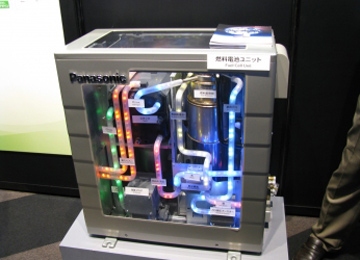PORTLAND, Ore.—Fuel cells have been ready for commercialization for years, albeit only for use with pure hydrogen—easy to purchase for the lab, but expensive to mass produce. Even the best fuel cell designs become poisoned by impurities in hydrogen derived from natural gas—the most abundant source—causing them to fail prematurely. Now Cornell University scientists working for the U.S. Department of Energy (DoE) believe they have a cure using nanotechnology that could make hydrogen fuel cells commercially viable.

The scientists discovered the cure after analyzing the problem—carbon-monoxide poisoning. Fuel cells electrochemically decompose hydrogen fuel, stripping off its electrons by bonding it with oxygen to form water vapor—its only emission. However, the platinum/ruthenium-alloy catalyst used for the anode in traditional PEM (proton exchange membrane) fuel cells is not only expensive, but can be poisoned by exposure to even trace levels of carbon monoxide. Commercial methods exist for scrubbing carbon monoxide from the hydrogen produced from natural gas, but that inflates the cost of the hydrogen to uneconomical levels.
To solve the problem, a research team led by professor Hector Abruna of Cornell University's Energy Materials Center harnessed nanotechnology to fabricate a catalyst that is less expensive than platinum/ruthenium alloys and yet can tolerate levels of carbon monoxide found in hydrogen produced from natural gas.
The new catalyst is composed of titanium oxide and tungsten coated with a thin-film of platinum nanoparticles, resulting in a tolerance for as much as two-percent carbon monoxide—about 2,000 times more than the amount required to poison a pure platinum catalyst.
Hydrogen fuel cells today use a platinum/ruthenium-alloy catalyst for their anode, but Cornell University researchers say substituting their nanotech catalyst could make fuel cells commercially viable.
Now that the researchers have proven the concept in the lab, they are fabricating a complete PEM fuel cell using their new catalyst. So far the prototype fuel cells outlast traditional fuel-cells, which fail prematurely, and now the team wants to quantify for how long their new architecture will extend a fuel cell's life.
Other researchers contributing to the work included Cornell professor Francis DiSalvo, post doctoral researcher Deli Wang, research associate Hongsen Wang and doctoral candidates Chinmayee Subban and Eric Rus.


0 comments:
Post a Comment